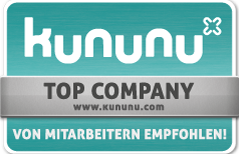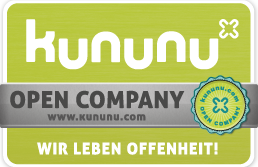There was once a noticeboard... How to use social media channels in a legally compliant manner

Hardly any companies have rules regarding how to handle the noticeboard and what is published there. In view of the extremely limited audience, this is certainly understandable and usually not a problem. However, the situation with information in new media is entirely different given that the aim here is to address interested parties, customers and possible future employees, rather than those who already belong to the company. Here, it is important to consider the numerous legal pitfalls that come with such external displays. The most important of these are discussed below:
First of all, particular attention should be paid to the duty to provide publication details. In accordance with Section 5 of the Telemedia Act (TMG), when using teleservices for business purposes, it is obligatory to provide a range of information about the company, in particular the company name, the complete address and the legal representative. This requirement applies in particular to the company’s homepage, and it makes no difference whether goods and/or services are actually sold via this website. Thus, a simple presentation of the company is also covered by this regulation and triggers the obligation to provide publication details, meaning it also applies to presentations on Facebook, etc. It is therefore not sufficient to simply place a reference to the company and a link to the company homepage under “Info”. Even for these external representations on social media, complete publication details must be provided.
If journalistic-editorial offers are also published here, Section 55 (2) of the State Broadcasting Treaty (RStV) states that a specific person responsible for this content must be named, approximately as in the press laws regulated by the individual federal state.
In most cases, the presentation of the company will not be restricted to just text, but will also include graphics and photographs. As these are subject to copyright, it is essential to have the necessary rights granted to use them in social media. It is absolutely not sufficient to assume that the necessary rights are available simply because an employee says that he has found a nice image. On the contrary, it is necessary to explicitly request the required rights from the copyright holder; simply thinking “it will be okay” is not enough. In addition, if the image includes people, you must procure their explicit permission, as using the image will otherwise violate their personal rights.
Frequently, social media channels are used to find out more about the visitors’ user behaviour. Tracking measures are used for this and, above all, cookies are analysed. In such cases, it is absolutely essential to pay attention to the applicable data protection law. This ensures, for example, that only anonymised IP addresses of visitors can be used, as well as that users are informed via a data protection declaration from the very beginning which data regarding them will be saved and potentially processed and to what extent. One problem that arises here is the integration of social media plug-ins, such as a Facebook “Like” button or the “Google+” button: since nobody knows precisely which data is actually transmitted to social media providers when this function is used or even to whom data is forwarded, data-compliant handling of user data is basically impossible. This is even more applicable if you consider that user data is already forwarded to Facebook or Google when a user accesses the page with the “Like” button in the browser – even if the button itself has not been clicked.
In particular if the company and its own products and services are presented for advertising purposes, competition legislation also needs to be taken into account. For example, if statements are made regarding the company’s own products or those of a competitor, it is important to check that these are actually correct. In addition, bought user evaluations or viral marketing actions that conceal the advertising function are anti-competitive. The popular “tell a friend” function frequently also results in violation of legislation regarding competition, as the “friend” who is the target of the advertising measure usually has not agreed to his e-mail address being used for advertising. To complicate matters, it is important to consider that companies are also responsible for statements their employees make on company social media channels, even if the company management did not approve these statements. Thus the company cannot exonerate itself by asserting that the employee did not consult the management before claiming that they have the best product or that competitor XY is a cowboy anyway.
Finally, in addition to the regulations specifically discussed above, general laws as well as principles of employment law also have to be taken into account – particularly if the social media channels are also used to recruit employees.
The
above – non-exhaustive – points show that use of modern means of
communication involves extensive legal obligations. It is therefore sensible to
have these maintained and monitored centrally by a specific department and a
fixed group of individuals, while all other employees are not permitted to make
statements relating to the company on these kinds of social media channels.
Only in this way is it possible to ensure that the existing regulations are
implemented and adhered to as far as possible.
Author:

Stephan Wiedorfer-Rode
was born in 1967 in Munich. He studied law in Munich and, during his traineeship, worked in New York for six months for Germany’s largest record label. He has been a member of the bar since 1996 and founded his first law firm in 1999. He specialises in consulting in the field of computer and Internet law, including procedural enforcement of the relevant claims. His other areas of activity include trademark, copyright and competition law. Stephan Wiedorfer has been a certified specialist for industrial property rights since 4 February 2008. He is a member of the Deutsche Vereinigung für gewerblichen Rechtsschutz und Urheberrecht e. V. (GRUR; German Association for Industrial Property and Copyright), the Deutsche Gesellschaft für Recht und Informatik e. V. (DGRI; German Association for Law and Informatics)) and the Arbeitsgemeinschaft Informationstechnologie im Deutschen Anwaltverein (DAV-IT; Information Technology Working Group of the German Association of Lawyers).
Other articles by this author:
- Article "Compliance – what is actually still permitted today?"
- Article "Is the Internet of Things first and foremost an Internet of legal uncertainty?"
- Article "There was once a noticeboard... How to use social media channels in a legally compliant manner"
- Article "Digital butler or spyhole? What you need to consider when implementing a tenant app"
- Article "Contract design for software implementation – how significant are fairness and transparency?"
- Article "Everything is flowing smoothly – drafting contracts for agile projects"
- Article "WhatsApp in companies – how can it be used in a legally compliant way?"
- Article "What digital data rules are in place for asset and property management contracts?"
- Article "Smart, sure. But safe? Drones deployed for property management"
- Article "Are security vulnerabilities to hacker attacks a defect for which the software provider can be held liable?"
- Article "Gas prices are rising and the gas price cap is intended to remedy the situation."
- Article "Landlord-to-tenant electricity – a sustainable energy alternative"

